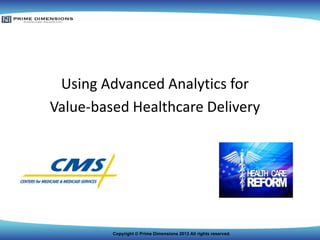Prime Dimensions is a consulting firm focused on advanced analytics for value-based healthcare, aiming to transform data into actionable insights. The document highlights the challenges faced by the U.S. healthcare system and outlines innovative payment reform models, including accountable care organizations and bundled payments. It emphasizes the importance of big data enabling technologies and their role in improving healthcare outcomes while managing costs.



































